History of Maykop
Foundation of Maykop
The history of Maykop goes back to antiquity. In the 7th-12th centuries AD, the Great Silk Road passed through the territory of Maykop and Adygea. Adyghe, as a separate ethnic group, were first mentioned in the 12th century. In 1557, after the conclusion of the marriage alliance between Ivan the Terrible and the daughter of the Kabardian prince, the Adyghe tribes officially became part of Russia.
The first mention of the Adyghe toponym “Maykop” and related “Maykop heights”,”Maykop gorge”, etc. in Russian documents dates back to 1810. In January - February 1810, a detachment under the command of General of Infantry S.A. Bulgakov made an expedition to these lands. The second time the toponym Maykop was mentioned in documents 15 years later, in the summer of 1825, during an expedition of troops under the command of General A.A. Velyaminov. In the fall of 1825, by his order, a fort was erected on the bank of the Belaya River.
On May 25, 1857, on the site of the present Maykop, a Russian fortress was laid, surrounded by a high rampart and a moat. Until 1864, the year of the end of the Caucasian War, the fortress was an important strategic point during the conquest of Circassia. After the end of the Caucasian War, it gradually lost its military significance and the active development of industry began: pottery, butter, soap, and brick production.
In 1870, Maykop was given the status of a county town. In 1888, the Assumption Cathedral was built on the territory of the town. For a long time it occupied a central place in the Orthodox life of the local residents. Then, one after another, cultural and educational institutions began to appear.
More Historical Facts…
Maykop in the late 19th - 20th centuries
In 1897, Maykop gained world fame with the discovery of the famous burial mound “Oshad”, which was the burial of a tribal leader belonging to the archaeological culture of the second half of the third millennium BC. The objects found in the mound are among the most ancient cultural monuments of the Bronze Age.
At the end of the 19th century, there were about 5,500 houses in Maykop, including 121 stone buildings, five Orthodox churches, a synagogue, two pharmacies, several schools. Industrial production was represented by 112 enterprises including 50 cooperage and 8 pottery workshops, 13 brick factories, an iron foundry, 6 water mills. Agriculture also developed, primarily animal husbandry and tobacco growing. In 1897, the population of Maykop was about 34,300 people.
In 1909, oil fields were discovered southwest of Maykop. On December 12, 1910, the first train arrived from Belorechensk to Maykop. In 1911, the construction of the water supply was completed.
On July 27, 1922, Circassian (Adyghe) Autonomous Oblast was formed. In 1936, the city of Maykop became its administrative center. In 1938, pumping of Maykop oil began through the Grozny-Tuapse pipeline to the Tuapse port and to the oil refinery. In 1939, the population of Maykop was 55,871 people.
During the Second World War, Maykop was occupied by German troops from August 9, 1942 to January 29, 1943. In 1952, the Maykop hydroelectric power station was put into operation on the Belaya River. Today, it is the most powerful hydroelectric power plant in Adygea. In 1960, the development of the Maykop gas condensate field, located 15 kilometers from the city, began. In the 1960s, the number of city residents exceeded 100 thousand.
In 1989, the population of Maykop was about 148,600 people. In 1990, the Adyghe Regional Council of People’s Deputies made a decision to transform Adyghe Autonomous Oblast into the Republic of Adygea.
Streets of Maykop
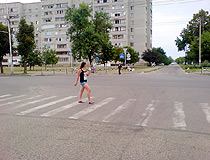
At the pedestrian crossing in Maykop
Author: Asker Koshubaev
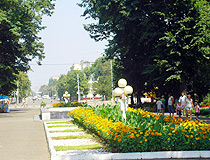
Maykop is a green city
Author: Konstantin Seryshev
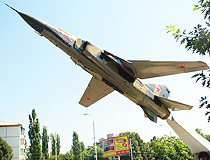
MiG-23 jet fighter in Maykop
Author: Aleksey Pogoryansky
Maykop - Features
Maykop is located on the right bank of the Belaya River (a tributary of the Kuban River) at an altitude of 210-230 meters above sea level about 1,400 south of Moscow and 130 km southeast of Krasnodar. This city is one of the greenest in Russia - there are a lot of parks and green spaces. According to the 2010 census, Russians made up about 71% of the city’s population, the Adyghe people - 18%.
The current coat of arms of Maykop was adopted in 1972. It depicts gold figurines of bulls found during excavations of the Maykop mound in 1897. Today, they are kept in the State Hermitage Museum in Saint Petersburg.
This area is characterized by a temperate continental climate with mild winters, warm summer months and significant rainfall. The summer period lasts 180-198 days. The average temperature in January is minus 0.5 degrees Celsius, in July - plus 22.8 degrees Celsius.
The system of intercity bus transportation connects Maykop with Krasnodar, Sochi, Gelendzhik, Nalchik, Stavropol, Makhachkala, Rostov, Armavir, Belorechensk, Tuapse, Astrakhan, and other cities. Buses and trolleybuses are used for passenger transportation on intracity routes.
The main sectors of the Maykop industry are food, woodworking, pulp and paper, machine building. The tourism industry is actively developing, hiking, horse, and bicycle routes are being created that run through the territory of the Northwest Caucasus. In the village of Pobeda, on the southern outskirts of the city, there is a balneological institution. Mineral water from local springs is used for medical procedures.
Today, Maykop is, first of all, the main cultural center of Adygea. The city has a lot of preserved historical and architectural monuments. In addition, it is easy to get to a number of beautiful natural sights of the Caucasus from the capital of the Adygea Republic.
Main Attractions of Maykop
National Museum of the Republic of Adygea. The museum has unique collections numbering more than 270 thousand exhibits: collections of clothing, musical instruments, porcelain, precious stones, coins, sculpture, graphics, fine arts of the 20th-21st centuries, arts and crafts, art of the countries of the East, natural science, historical-household, ethnographic collections, and much more. This is the only museum in Russia with a sector of the Adyghe diaspora, which is devoted to the life of the Adygs (Circassians) living abroad. Sovetskaya Street, 229.
Maykop Mosque - the main mosque of Maykop and the seat of the Spiritual Administration of Muslims of the Republic of Adygea and Krasnodar Krai. The construction of the mosque was started in April 1999 and completed in October 2000. It is crowned with a huge azure dome. One of the characteristic features of this religious site is that non-Muslim tourists are allowed to visit it. Sovetskaya Street, 200.
Monument of Memory and Unity - a monument dedicated to the victims of the Caucasian War of 1817-1864, the symbol of unity of all residents of the republic. This original 20-meter building has the shape of a traditional Adyghe hearth. Its facade is decorated with high reliefs based on the national epic, images of mythological and cult scenes, portraits of famous cultural figures, famous historical figures. The monument is surrounded by a park and is an important component in the architectural composition that unites the Maykop Mosque, the Philharmonic Society, the National Museum of Adygea. Pobedy Street, 36.
Maykop Park of Culture and Recreation - one of the most beautiful places in the city. This park was laid out in the center of Maykop in 1966. In 2009, a full-scale reconstruction was carried out. Among other things, a light and music fountain was installed. During the summer season, a large open-air pool 3 meters deep is open (one of the largest outdoor pools in Europe). Nearby, you can have a snack in one of the cafes. Pushkina Street, 278.
Museum of Oriental Art. This museum was created to collect exhibits about the culture of the North Caucasus and preserve the traditions of folk art. The exhibits are divided into the following collections: “Fabrics and Woven Products”, “Precious Metals and Precious Stones”, “Ceramics, Wood, and Metal”, “Painting, Graphics, and Sculpture”, “Archeology”. Pervomayskaya Street, 221.
Picture Gallery of the Republic of Adygea. In total, there are about 1,300 exhibits in this small museum. The collection “Graphics of Adygea” is especially interesting. It also hosts temporary exhibitions of local artists. In one of the halls, you can see the permanent exhibition “Folk crafts and trades of the Adygs”. Krasnooktyabrskaya Street, 27.
Maykop Brewery. The buildings of this large brewery are recognized as architectural monuments. Its malt shop (1910) resembling a castle can be rightfully called the most picturesque building in Maykop (Lenina Street, 1). The main building of the brewery is located at Gogolya Street, 2. There are guided tours of the Maikop brewery.
St. Michael’s Athos Hermitage - a monastery of the Maykop diocese of the Russian Orthodox Church. Founded in 1877, it is located in the village of Pobeda, about 7 km southeast of the center of Maykop. The buildings of this monastery are an architectural monument. Today, the monastery is visited by thousands of tourists and pilgrims. Excursions are organized around the monastery.


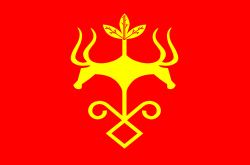
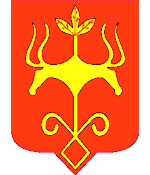
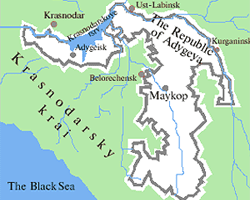



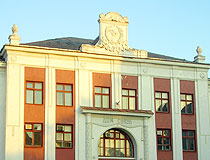
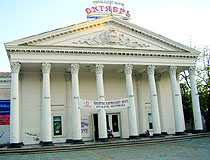
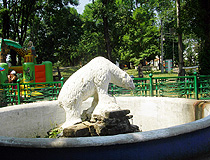
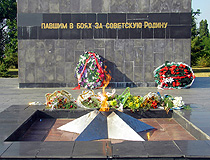
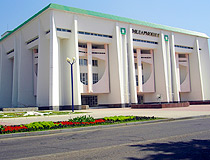
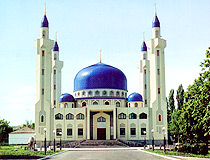
The comments of our visitors